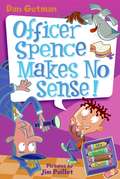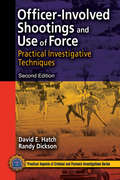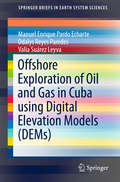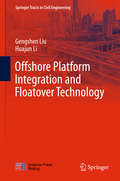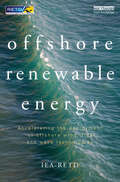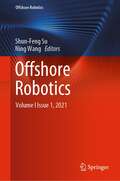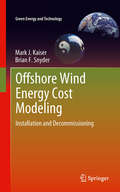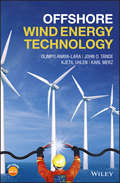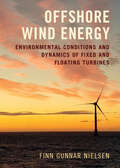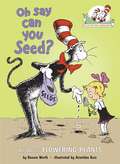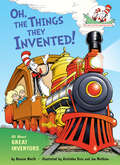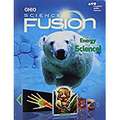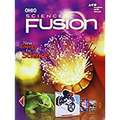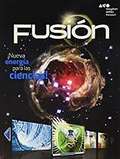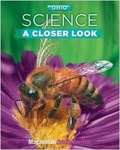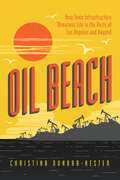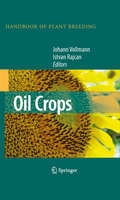- Table View
- List View
Officer Spence Makes No Sense! (My Weird School Daze #5)
by Dan GutmanThe weirdness never stops! <p><p> The security guard at Ella Mentry School has gone off the deep end! Somebody is stealing peanut butter and jelly sandwiches from the vomitorium, and Officer Spence is on the case. He's arresting everybody in sight! Somebody is going to go to jail! Who is it? You'll have to read the book to find out.
Officer-Involved Shootings and Use of Force: Practical Investigative Techniques, Second Edition (Practical Aspects of Criminal and Forensic Investigations)
by Randy Dickson David E. HatchOfficer-Involved Shootings and Use of Force: Practical Investigative Techniques, Second Edition continues to provide sound and sober models, protocols, and procedures to handle the highly charged fall-out from officer involved shootings. Written by cops for cops, it is designed to address the needs of the agency, the rights of the employee, and the
Offshore Exploration of Oil and Gas in Cuba using Digital Elevation Models (SpringerBriefs in Earth System Sciences)
by Manuel Enrique Pardo Echarte Odalys Reyes Paredes Valia Suárez LeyvaThis book provides an overview of the major changes induced by hydrocarbons (HCs) affecting rocks and surface sediments and their implications for non-seismic exploration methods, particularly for marine territories near Cuba. It examines the use of a digital elevation model (DEM) at 90x90m resolution for the detection of subtle, positive geomorphic anomalies related to hydrocarbon microseepage (vertical migration) on possible oil and gas targets. The results support the conclusion that the DEM data provides a low cost and fast offshore oil and gas preliminary exploration strategy. This data is useful serving to focus prospective areas with supplementary unconventional methods such as magnetic-induced polarization (MIP), useful to propose more expensive volumes for detailed 2D–3D seismic surveys.
Offshore Mechatronics Systems Engineering
by Hamid Reza KarimiThe book gives a systematical and almost self-contained description of the many facets of envisaging, designing, implementing or experimentally exploring offshore mechatronics and systems along the adequate designs of integrated modeling, safety, control and supervision infrastructure. With the rapid improvements in offshore technologies in various fields such as oil and gas industry, wind energy, robotics and logistics, many researchers in academia and industry have focused on technology-based challenges raised in offshore environment. This book introduces novel theoretical or practical techniques for offshore mechatronics systems. Chapters cover general application model-based systems engineering, wind energy, control systems, mechanics, health monitoring, safety critical human-machine systems, logistics and offshore industrial complexes such as oil and gas operations, robotics, large space structures and autonomous underwater vehicles, and some other advanced technologies. The core feature of this book is that of establishing synergies of modeling, control, computing and mechanics in order to achieve not only robust plant system operation but also properties such as safety, cost, integrity and survivability while retaining desired performance quality. The book provides innovative insights into applications aspects and theoretical understanding of complex offshore mechatronics systems that has emerged in recent years, either via physical implementations or via extensive computer simulations in addition to sound innovated theoretical developments. It will serve as a reference for graduate and postgraduate students and for researchers in all engineering disciplines, including mechanical engineering, electrical engineering and applied mathematics to explore the state-of-theart techniques for solving problems of integrated modeling, control and supervision of complex offshore plants with collective safety and robustness. Thus it shall be useful as a guidance for system engineering practitioners and system theoretic researchers alike.
Offshore Petroleum Drilling and Production
by Sukumar LaikThe key focus of the book is on engineering aspects of the subject field Updated, comprehensive text covering offshore drilling, production and field development and offers complete coverage of offshore oil and gas operations. <P><P> Also, key maintenance issues like pigging, corrosion, subsidence are discussed.
Offshore Platform Integration and Floatover Technology
by Gengshen Liu Huajun LiThis book discusses offshore platform integration technology, focusing on the floatover methodology and its applications. It also addresses topics related to safety and cost-effectiveness, as well as ensuring the success of a project through careful planning and established detailed operation procedure/working manuals, which are rarely found in the published literature. Unlike other publications in this area, the book not only includes details of technology development, but also presents real project cases in the discussion to make it more comprehensible. Each topic is illustrated with carefully created sketches to show the complex operation procedures.
Offshore Renewable Energy: Accelerating the Deployment of Offshore Wind, Tidal, and Wave Technologies
by Iea-Retd (Stichting Foundation RenewableWave, tidal and offshore wind technologies have long held the promise of seemingly limitless energy supplies. In practice, while offshore wind is growing relatively rapidly, all three sectors have lagged behind expectations. This book, from the International Energy Authority Renewable Energy Technology Deployment implementing agreement (IEA-RETD), examines the reasons for this and suggests how barriers to deployment might be overcome. Beginning with an assessment of the marine energy resource, it provides a detailed introduction to the main technologies currently being employed to harness wind, tidal and offshore wind power. It then examines the types of policies which are used to encourage deployment around the world, and progress towards meeting targets. The economics of offshore energy projects are discussed, along with risks that projects face and the types of finance which are available. A final section turns to barriers - both technical and non-technical (including environmental, health and safety, skill related, supply chain and more) - and in all cases suggests how to mitigate and remove these barriers. Highly illustrated in full colour, this is an indispensable resource for anyone - whether in industry, policy or academia - looking to learn more about how deployment of offshore renewable energy technologies can be encouraged.
Offshore Robotics: Volume I Issue 1, 2021 (Offshore Robotics)
by Ning Wang Shun-Feng SuThis journal-like book series includes edited volumes to rapidly report and spread the latest technological results, new scientific discovery and valuable applied researches in the fields concerning offshore robotics as well as promote international academic exchange. We aim to make it one of the premier comprehensive academic publications of world offshore vehicle and robotics community.The audience of the series will include the scholars, researchers, engineers and students who are interested in fields of autonomous marine vehicles and robotics, including autonomous surface vehicles, autonomous underwater vehicles, remote operation vehicles, marine bionics, marine vehicle modeling, guidance, navigation, control and cooperation and so on.
Offshore Wind Energy Cost Modeling
by Mark J Kaiser Brian SnyderOffshore wind energy is one of the most promising and fastest growing alternative energy sources in the world. Offshore Wind Energy Cost Modeling provides a methodological framework to assess installation and decommissioning costs, and using examples from the European experience, provides a broad review of existing processes and systems used in the offshore wind industry. Offshore Wind Energy Cost Modeling provides a step-by-step guide to modeling costs over four sections. These sections cover: ·Background and introductory material, ·Installation processes and vessel requirements, ·Installation cost estimation, and ·Decommissioning methods and cost estimation. This self-contained and detailed treatment of the key principles in offshore wind development is supported throughout by visual aids and data tables. Offshore Wind Energy Cost Modeling is a key resource for anyone interested in the offshore wind industry, particularly those interested in the technical and economic aspects of installation and decommissioning. The book provides a reliable point of reference for industry practitioners and policy makers developing generalizable installation or decommissioning cost estimates.
Offshore Wind Energy Technology
by Olimpo Anaya-Lara John Olav Tande Kjetil Uhlen Karl MerzA COMPREHENSIVE REFERENCE TO THE MOST RECENT ADVANCEMENTS IN OFFSHORE WIND TECHNOLOGY Offshore Wind Energy Technology offers a reference based on the research material developed by the acclaimed Norwegian Research Centre for Offshore Wind Technology (NOWITECH) and material developed by the expert authors over the last 20 years. This comprehensive text covers critical topics such as wind energy conversion systems technology, control systems, grid connection and system integration, and novel structures including bottom-fixed and floating. The text also reviews the most current operation and maintenance strategies as well as technologies and design tools for novel offshore wind energy concepts. The text contains a wealth of mathematical derivations, tables, graphs, worked examples, and illustrative case studies. Authoritative and accessible, Offshore Wind Energy Technology: Contains coverage of electricity markets for offshore wind energy and then discusses the challenges posed by the cost and limited opportunities Discusses novel offshore wind turbine structures and floaters Features an analysis of the stochastic dynamics of offshore/marine structures Describes the logistics of planning, designing, building, and connecting an offshore wind farm Written for students and professionals in the field, Offshore Wind Energy Technology is a definitive resource that reviews all facets of offshore wind energy technology and grid connection.
Offshore Wind Energy: Environmental Conditions and Dynamics of Fixed and Floating Turbines
by Finn Gunnar NielsenMany countries have plans to expand wind energy to meet CO2 emissions targets. Lack of available land area and the need for good and stable wind conditions have stimulated the development of offshore wind turbines, which allows for the development of larger turbines. The offshore environment, however, involves new challenges related to the design, installation, operation and maintenance of the turbines. Based on a graduate-level course taught by the author, this book focuses on the opportunities and challenges related to offshore wind turbines. It introduces the offshore environment, including wind and wave dynamics, before discussing the aerodynamics of wind turbines, hydrodynamic loading, marine operations, and wind farm layout. Featuring examples that demonstrate practical application of the topics covered and exercises to consolidate student understanding, this is an indispensable reference text for advanced students and researchers of environmental science and engineering and for industry professionals working in the wind energy sector.
Oh Beautiful Beer
by Harvey ShepardThe craft beer boom of the last decade has led to an explosion of new breweries. In such a crowded market, how do you make your beer stand out from the crowd? For many of the best brewers, the secret is to have an eye-catching design, something that reflects the quality of the product within and the values of the brewer who made it. Based on the hugely popular blog, Oh Beautiful Beer collects the most innovative new labels and logos into a sumptuous full-color book. Each brewery is selected by graphic designer Harvey Shepard, who uses the designs to create a visual history of craft beer. From the Gonzo cartoons of Flying Dog to the playful geometric patterns of Evil Twin to the classic Brooklyn "B," every beer geek will want to own this love letter to the art of beer.
Oh Say Can You Seed?: All About Flowering Plants
by Bonnie WorthWith the able assistance of Thing 1 and Thing 2 -- and a fleet of Rube Goldbergian vehicles -- the Cat in the Hat examines the various parts of plants, seeds, and flowers; basic photosynthesis and pollination; and seed dispersal.
Oh, Ick!: 114 Science Experiments Guaranteed to Gross You Out!
by Joy Masoff Jessica Garrett Ben LigonFrom the bestselling author of Oh, Yuck! and Oh, Yikes!, with over 1.25 million copies in print, here is an A-Z compendium of hands-on grossness. Featuring 114 interactive experiments and ick-tivities, Oh, Ick! delves into the science behind everything disgusting. Stage an Ooze Olympics to demonstrate viscosity and the nature of slime. Observe how fungi grow by making a Mold Zoo. Embark on an Insect Safari to get to know the creepy crawlies around your home. And learn what causes that embarrassing acne on your face by baking a Pimple Cake to pop—and eat. Eww!
Oh, Yuck!: The Encyclopedia of Everything Nasty
by Joy MasoffKids love stuff that's gross. From the liquids, solids, and gases--especially the gases!--or their own bodies to the creepy, crawly, slimy, slithery, fetid, and feculent phenomena in the world at large, kids with a curious bent just can't get enough. Oh, Yuck! The Encyclopedia of Everything Nasty brings together, in one book, all the good things about some of the baddest things on Earth.Exhaustively researched and impeccably scientific, yet written with a lively lack of earnestness, Oh, Yuck! is an ants to zits encyclopedic compendium covering people, animals, insects, plants, foods, and more. Here are vampire bats, which sip blood and pee at the same time so that they'll always be light enough to fly away; and slime eels, wreathed in mucus and eating fellow fish from the inside out. Oh, Yuck! explains why vomit smells; where dandruff comes from; what pus is all about; and why maggots adore rotting meant. Other features include gross recipes, putrid projects, 10 foods that make you airborne, and more.With hundreds of cartoon illustrations and real-life photographs, Oh, Yuck! is the complete guide to the irresistible--at least to an 8-to-12 year old--underbelly of life.
Oh, the Things They Invented!: All About Great Inventors (Cat in the Hat's Learning Library)
by Bonnie WorthFrom the first printing press to the World Wide Web—the Cat looks at inventors and inventions that have changed our lives! The Cat in the Hat goes back in time to meet with the masterminds of more than a dozen inventions that made a major impact on our lives today—from famous figures like Thomas Edison, Alexander Graham Bell, and the Wright brothers to lesser-known ones like Garrett Morgan, Mary Anderson, and Tim Berners-Lee. Children will learn basic information about each invention, as well as fascinating facts like how Guttenberg&’s famous printing machine was made from an old wine press, how a steaming teakettle may have inspired the creation of the steam engine, and how table salt changed the history of photography. Ideal for supporting the Common Core State Standards, and a natural for fans of the hit PBS Kids show The Cat in the Hat Knows a Lot About That!, this is a great way to introduce beginning readers to science!
Ohio Interactive Science [Grade 2]
by Michael J. Padilla Don Buckley Zipporah MillerNIMAC-sourced textbook
Ohio Science Fusion
by Holt McdougalCompiled for Ohio New Learning Standards for Science for Grade 7 to build science literacy to enrich your life both in school and later in life.
Ohio Science Fusion [Grade 8]
by Marjorie Frank Michael R. Heithaus Michael A. DispezioNIMAC-sourced textbook
Ohio Science: A Closer Look [Grade 2]
by Jay K. Hackett Richard H. Moyer JoAnne VasquezNIMAC-sourced textbook
Oil Beach: How Toxic Infrastructure Threatens Life in the Ports of Los Angeles and Beyond
by Christina Dunbar-HesterCan the stories of bananas, whales, sea birds, and otters teach us to reconsider the seaport as a place of ecological violence, tied to oil, capital, and trade? San Pedro Bay, which contains the contiguous Ports of Los Angeles and Long Beach, is a significant site for petroleum shipping and refining as well as one of the largest container shipping ports in the world—some forty percent of containerized imports to the United States pass through this so-called America’s Port. It is also ecologically rich. Built atop a land- and waterscape of vital importance to wildlife, the heavily industrialized Los Angeles Harbor contains estuarial wetlands, the LA River mouth, and a marine ecology where colder and warmer Pacific Ocean waters meet. In this compelling interdisciplinary investigation, award-winning author Christina Dunbar-Hester explores the complex relationships among commerce, empire, environment, and the nonhuman life forms of San Pedro Bay over the last fifty years—a period coinciding with the era of modern environmental regulation in the United States. The LA port complex is not simply a local site, Dunbar-Hester argues, but a node in a network that enables the continued expansion of capitalism, propelling trade as it drives the extraction of natural resources, labor violations, pollution, and other harms. Focusing specifically on cetaceans, bananas, sea birds, and otters whose lives are intertwined with the vitality of the port complex itself, Oil Beach reveals how logistics infrastructure threatens ecologies as it circulates goods and capital—and helps us to consider a future where the accumulation of life and the accumulation of capital are not in violent tension.
Oil Crop Genomics
by Khalid Rehman Hakeem Huseyin Tombuloglu Turgay Unver Guzin TombulogluPlants are an important source of fats and oils, which are essential for the human diet. In recent years, genomics of oil biosynthesis in plants have attracted great interest, especially in high oil-bearing plants, such as sesame, olive, sunflower, and palm. Considering that, genome sequencing projects of these plants have been undertaken with the help of advanced genomics tools such as next generation sequencing. Several genome sequencing projects of oil crops are in progress and many others are en route. In addition to genome information, advanced genomics approaches are discussed such as transcriptomics, genomics-assisted breeding, genome-wide association study (GWAS), genotyping by sequencing (GBS), and CRISPR. These have all improved our understanding of the oil biosynthesis mechanism and breeding strategies for oil production.There is, however, no book that covers the genomes and genomics of oil crops. For this reason, in this volume we collected the most recent knowledge of oil crop genomics for researchers who study oil crop genomes, genomics, biotechnology, pharmacology, and medicine. This book covers all genome-sequenced oil crops as well as the plants producing important oil metabolites. Throughout this book, the latest genomics developments and discoveries are highlighted as well as open problems and future challenges in oil crop genomics. In doing so, we have covered the state-of-the-art of developments and trends of oil crop genomics.
Oil Crops
by Johann Vollmann Istvan RajcanThe volume on oil crop breeding is the third volume in the series, Handbook of Plant Breeding after the initial volumes on Vegetables and Cereals. Like the other volumes in the series, the volume will present information on the latest in applied plant breeding using the current advances in the field. The book consists of a total number of 19 chapters, with 17 being devoted to individual crops and two chapters dealing with general aspects of oil crop breeding. Outstanding scientists for each crop species are proposed as senior authors, who may invite co-authors to contribute part of a chapter. In order to increase the overall acceptance of the volume, authors from different research groups/countries have been asked to collaborate (if possible) on one and the same chapter in particular crops. The book is comprised primarily of specific issues and techniques pertaining to individual crops. It provides an update of the new oilseed crop development covering mainly Limnanthes ssp. and Cuphea ssp., which represent newly domesticated oil crop species with unique crop or oil characteristics. The last two chapters in the book are designed as introductory or review chapters; they highlight topics of general interest in oil crop breeding such as domestication/genetic diversity, oil crop breeding targets, oil crop and human health issues, selection strategies with biotechnologies and analytical techniques as well as genetic engineering of fatty acid profiles. This book is of interest to researchers in both academic and industrial setting as well as students and teachers of plant breeding.
